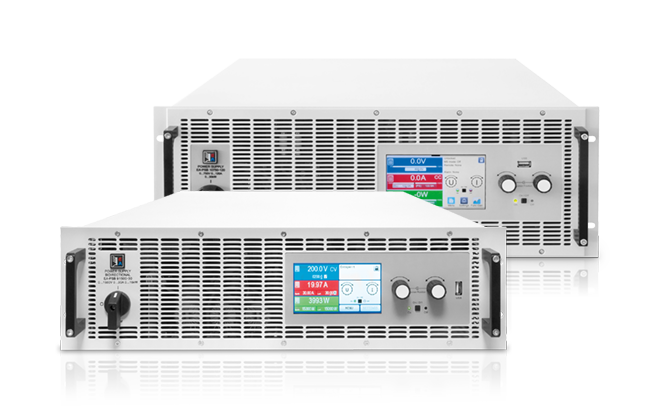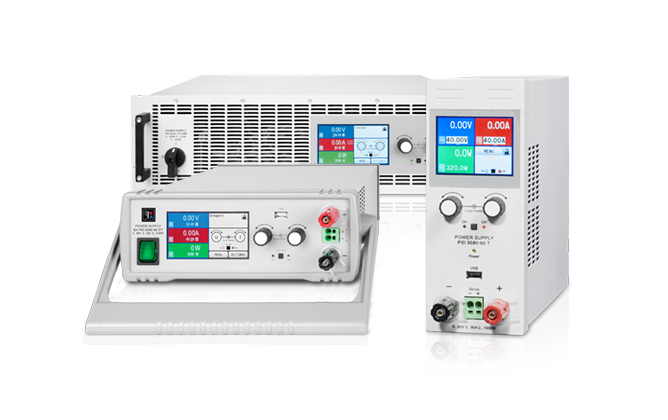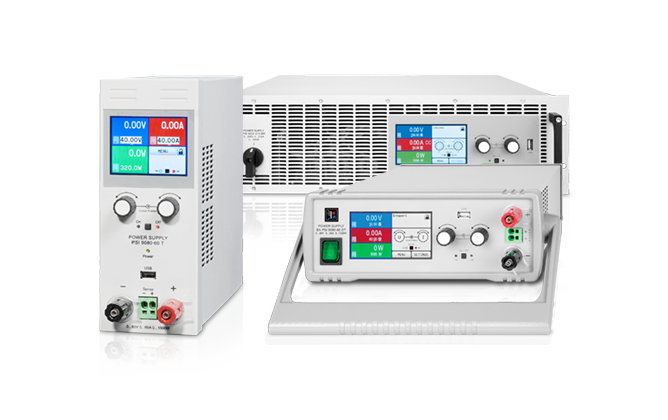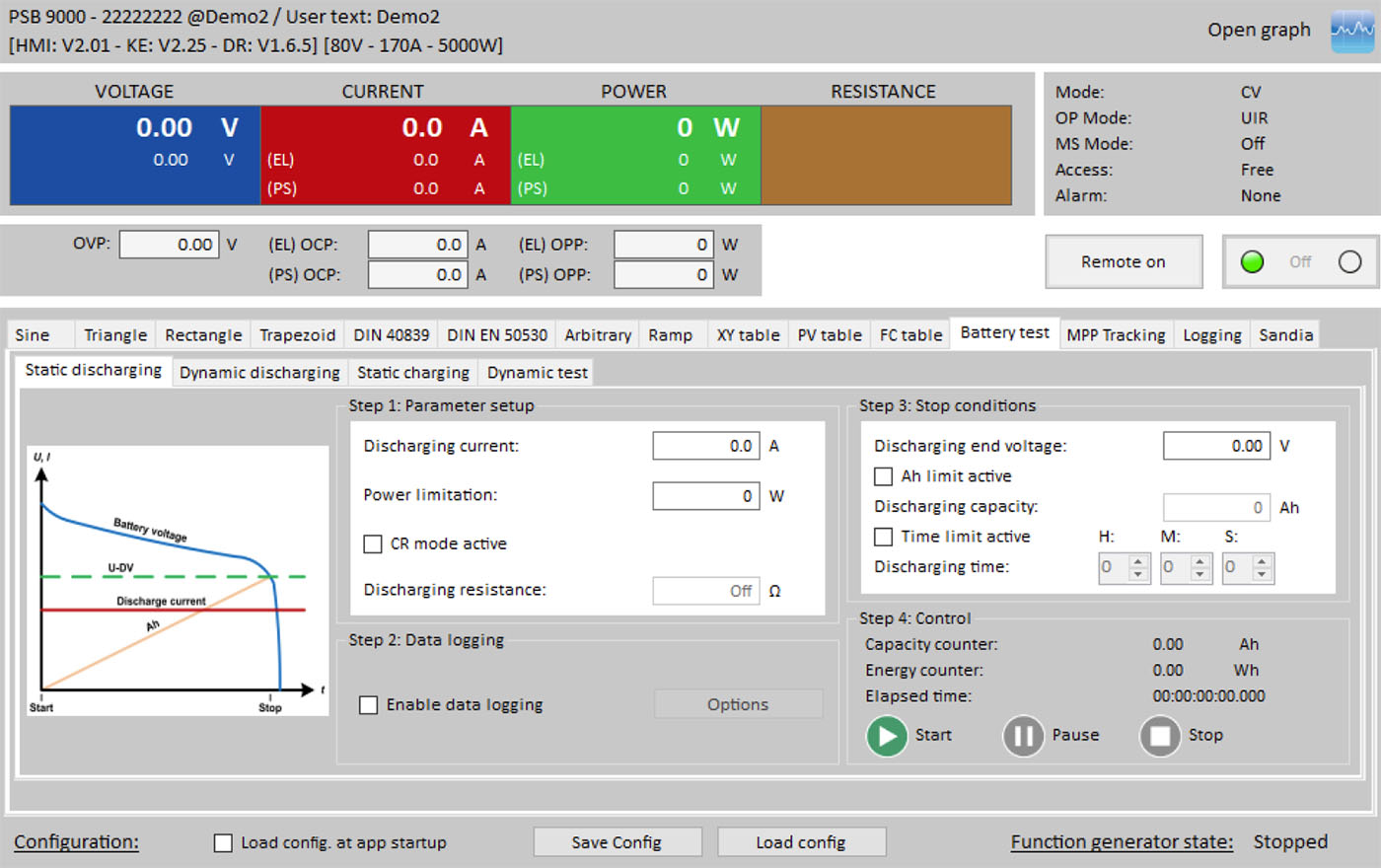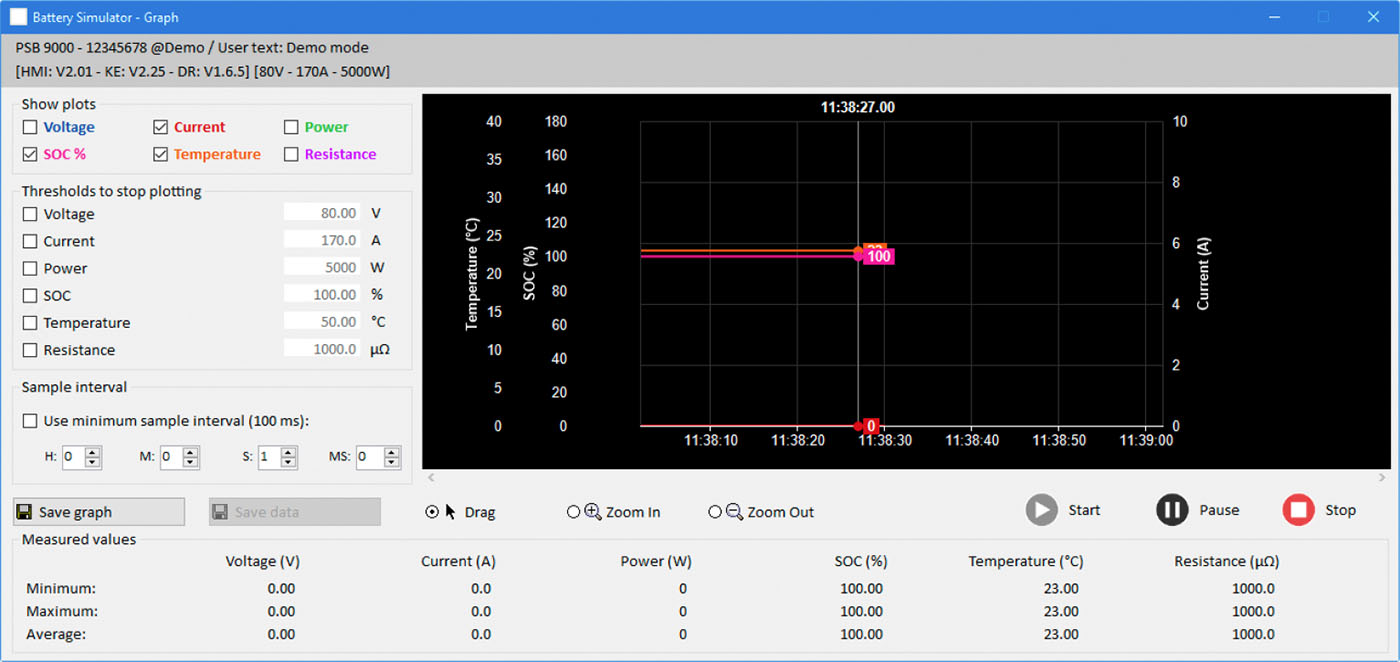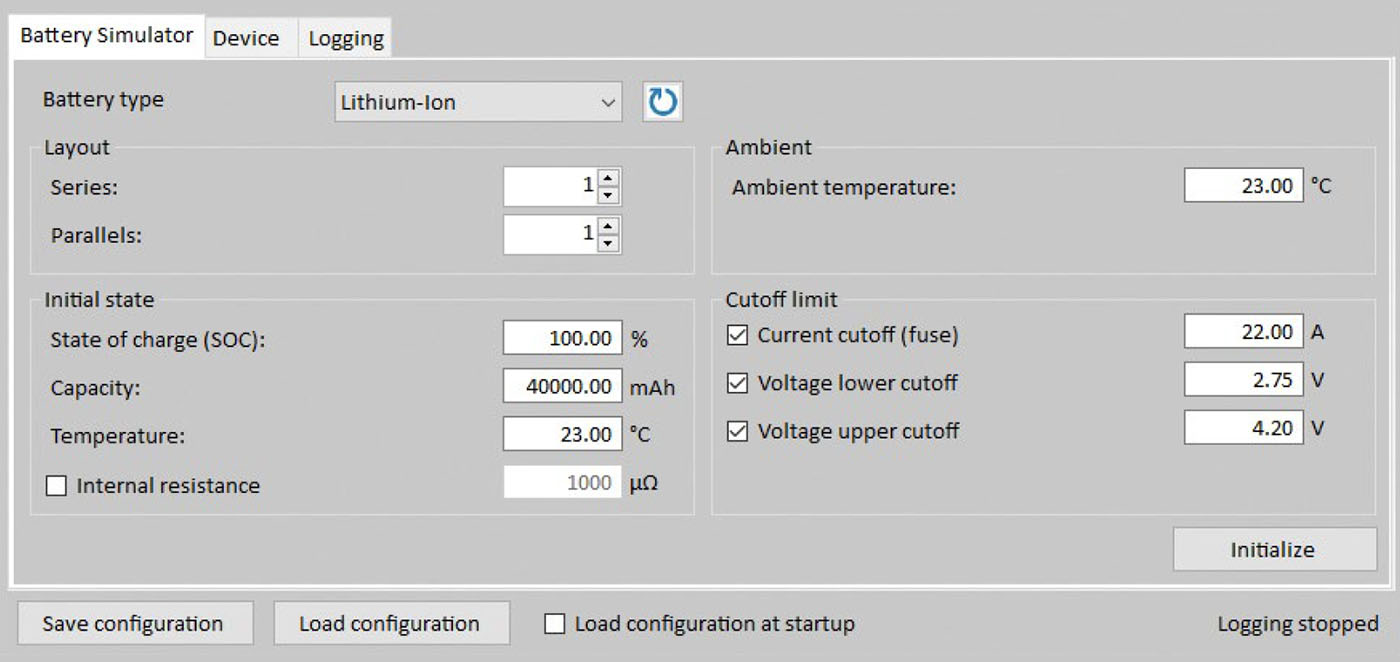Our solutions
For faster and cheaper tests
With today’s push to be increasingly mobile, batteries have become a huge part of our daily lives. Batteries are required to power everything from security cameras to computers, drones and even buses. The battery used in these applications require lots of testing during development and production to ensure they will meet all the demands of the real world. Traditionally the charging of a battery would be done using a programmable DC power supply, while the discharging would be done with an electronic or resistive load. Today the bidirectional, regenerative power supply can perform both tests, which not only saves capital and valuable rack space, but can regenerative the energy output from a discharging battery back into the local grid.
The Elektro Automatik PSB Series not only performs both functions, as it is both a DC source and a regenerative electronic load, but it can transition seamlessly between each function. The energy ‘sinked’ into the PSB from a discharging battery can then be put back into the local grid saving both energy and heating costs for the testing facility. EA’s DC power supply and load solutions come standard with pre-installed battery test software and routines to assist you in your battery test requirements, both lithium-ion and lead-acid.
Products Used in Battery Applications
Application Solutions
Battery Testing
Using EA PSB Bidirectional Power Supplies for Efficient Battery Testing
Batteries have become smaller and increasingly efficient as a result. To keep up with the rate of technology advancement, the equipment used to test advanced technology must also be advanced, flexible, and responsive. For these reasons, the PSB bidirectional programmable DC power supply series by EA Elektro-Automatik is a perfect fit for advanced battery test.
The PSB bidirectional supply can seamlessly switch between providing power to charge the battery and controlling the discharge of the battery. The built-in battery charge, static discharge and dynamic test functions are included with PSB, PSI, EL and ELR product series. EA can help with specifying just the right equipment and some basic guidance and considerations on how to build a robust battery test system to ensure the safety and proper functioning of all test equipment and batteries under test.
EA Advantages:
- Static charge, static discharge and dynamic test functions built in
- Autoranging
- Power Density
- Battery simulation
- Bidirectional and regenerative
- Arbitrary waveform and function generator
- Low EMC
- Industry experience
- Output voltage up to 2000V
- Plug and play paralleling
Battery test function shown in EAs Power Control Software. Can also be set up locally without software.
Battery Charging
Using programmable DC power supplies to charge batteries, such as Lithium-ion
Customers often submit requests for medium- or high-power battery chargers to serve various projects connected to vehicle electrification (EV), such as e-bikes, hybrid or full electric cars or trucks. These battery chargers are frequently used as part of a test rig for batteries in an EV environment to carry out cycle, performance, and age tests. Also, the test rigs will usually be provided with control, monitoring and safety mechanisms matching the type of battery they are going to test.
Such test rigs aimed at battery testing will require a programmable DC power supply with adequate interface (analogue or digital, e. g. CAN) with high precision, good resolution and low ripple. It can serve as an adjustable and highly flexible DC power backbone, enabling the test rig to connect to numerous different types of battery cells or battery packs with differing nominal voltage and capacities. EAs power supplies have a built in battery charge feature that will automatically stop when the charge voltage is reached or the battery capacity is reached.
EA Advantages:
- Static Charge, static discharge and dynamic test functions built in
- Autoranging
- Power Density
- Battery simulation
- Bi-directional and regenerative
- Arbitrary waveform and function generator
- Low EMC
- Industry experience
- Output voltage up to 2000V
- Plug and play paralleling
Battery Simulation
Using programmable bidirectional DC power supplies to simulate lead acid and lithium Ion batteries.
Bidirectional DC power supplies, by nature, are perfect for simulating a battery due to their ability to both source and sink power. By implementing an operational curve that mimics a specific battery type, a test engineer can accurately reproduce battery power to test those devices that provide charge to or receive energy from the battery. Elektro-Automatik’s Battery Simulator software makes it possible to simulate both lead-acid and lithium-ion batteries including their electrical and chemical characteristics during charge or discharge.
In cooperation with the renowned Fraunhofer institute in Germany, EA has developed algorithms to simulate batteries backed up by years of research. Now its possible to simulate a set of battery cells at a very specific state of charge(SOC) in a few minutes, rather than waiting for a battery to charge or discharge to the same SOC. The software also takes into consideration the battery capacity, internal resistance, ambient temperature and even state of health(SOH).
EA Advantages:
- Algorithm developed in partnership with the Fraunhofer Institute
- Static Charge, static discharge and dynamic test functions built in
- Autoranging
- Power Density
- Battery simulation
- Bi-directional and regenerative
- Arbitrary waveform and function generator
- Low EMC
- Industry experience
- Output voltage up to 2000V
- Plug and play paralleling
PSB being used to simulate a battery in an electric vehicle

